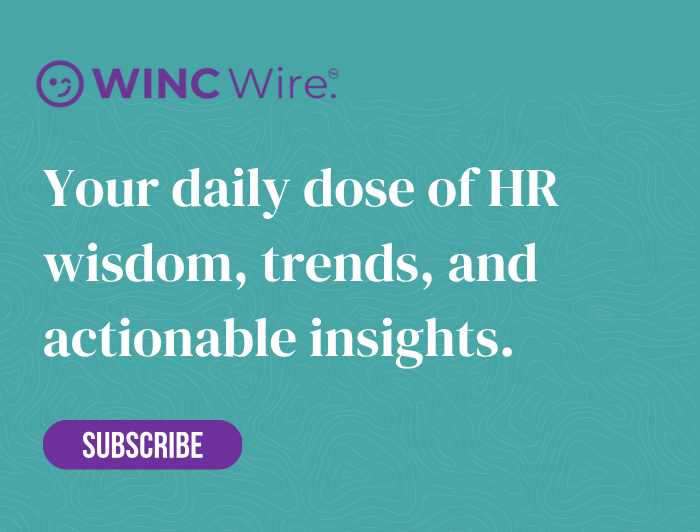Let’s be honest, when most people think of HR, they probably still picture compliance checklists and recruitment rounds. But what if our department, the one fundamentally about people, was also the driving force for a more responsible, sustainable future for our businesses?
In the organisations that are truly leading the way, sustainability isn’t just a glossy page in the annual report; it’s woven into the very fabric of their culture. And right at the centre of that cultural shift is HR, not as a box-ticker, but as the primary catalyst for genuine environmental, social and economic change.
So, what do we actually mean by ‘sustainability’ in the workplace?
Real sustainability isn’t just about switching to bamboo coffee cups. Think of it as a three-legged stool: it needs environmental care, social equity, and economic resilience to stand firm. Each part must be just as strong as the others, and it’s our job in HR to ensure that balance.
The Environmental Piece
From the server room to the supply chain, the environmental choices we make (or don’t make) define our impact. As HR professionals, we can drive incredibly practical changes. Think about digitising archaic paper-based processes, pushing for energy-efficient office fit-outs, or simply making recycling an ingrained, non-negotiable daily habit. These aren’t token gestures; they are small, deliberate acts of operational rigour that build into something significant.
Our Social Responsibility
A true ‘people-first’ approach has to extend far beyond the walls of our own office. It’s up to us to cultivate cultures of genuine inclusion and equity. Are we actively supporting our people to volunteer locally? Are we scrutinising our supply chain to ensure fair labour practices? When your teams feel they are part of an organisation that contributes positively to the wider world, you’ll find that pride and purpose follow very closely behind.
The Economic Imperative
Sustainable business isn’t about sacrificing profit for principles. It’s about building a business that’s resilient enough to thrive tomorrow, not just today. For HR, this means a shift in focus. We need to be attracting talent that is motivated by purpose just as much as by pay-packets, and then designing reward structures that properly recognise contributions to both the bottom line and our ethical goals.
How HR becomes the engine room for change
Our role simply has to evolve. We can no longer be just the custodians of policy. We must become leaders who anchor the entire organisation in sustainable principles. Here’s how you can start making that shift:
Attracting talent with a green conscience
You’ve surely seen it in interviews; today’s best candidates are driven by values. They want to work for employers who mean what they say. Your sustainability credentials must be a loud and clear part of your employer brand. It’s about more than just bringing in people who champion this thinking; it’s about proving you can live up to that promise every single day.
Learning that has a genuine impact
Let’s face it, a single slide in an induction deck isn’t training. To make sustainability stick, it needs to be an ongoing conversation. We need to equip our people with the knowledge to act, whether that’s through practical workshops on reducing waste or e-learning modules on the basics of a sustainable supply chain.
Creating a culture of ownership
People support what they help to create. If you want real participation, you need to give your employees a proper stake in the outcome. Why not introduce team-based challenges for reducing waste or promoting green commuting? And when you hit milestones, celebrate them. It’s in these shared successes that a culture of true excellence begins to form.
From theory to the office floor
Embedding sustainability into your company’s DNA has very little to do with policy documents and everything to do with lived, daily experience. HR can lead the charge by championing initiatives that deliver real environmental benefits without getting in the way of business.
- Remote and Flexible Working: Are you properly promoting this? It’s one of the easiest ways to slash commuter emissions while improving work-life balance.
- Sustainable Procurement: It’s time to ask tough questions of your suppliers, prioritising those with ethical, low-impact materials and processes.
- Smart Waste Management: Simple things like office composting schemes, effective recycling hubs, and a determined push for paperless workflows really do count.
- Energy Awareness: A lot of this is common sense, from automatic light sensors to simple prompts for staff to shut down their equipment properly. These small changes scale up surprisingly fast.
You’ll find your wellbeing programmes can link into this perfectly too. Think about encouraging plant-based canteen options or promoting cycle-to-work schemes. It’s this tapestry of small, connected changes that creates a genuine cultural shift.
Keeping the momentum alive
An eco-conscious culture won’t flourish on its own. It needs to be constantly nurtured and its stories told. This is where we in HR can connect the dots between communication, recognition and a shared sense of purpose.
Practical engagement tactics
- Interactive Workshops: Bring the topic to life with guest speakers, powerful stories, or even simulations that challenge people’s thinking.
- Recognition Schemes: Publicly celebrate your ‘green champions’, whether it’s an individual going the extra mile or an entire department smashing its targets.
- Internal Communication: Use your internal channels (newsletters, dashboards, team briefings) to keep the progress visible and maintain momentum.
When you get this right, the benefits are tangible:
- Higher Retention: Good people stay where their personal values align with the company’s.
- Stronger Employer Brand: Believe me, clients, candidates and partners all notice the effort and respect it.
- Increased Innovation: Engagement is the key that unlocks fresh ideas, from new energy-saving tools to brilliant upcycled office designs.
Embedding CSR: From add-on to core identity
Let’s be very clear: Corporate Social Responsibility (CSR) is no longer a ‘nice-to-have’ activity for the marketing department. It’s how modern businesses earn trust. Our job in HR is to ensure sustainability, ethics and transparency are stitched right into the core of the business identity. That means pushing for public reporting, building community partnerships, and upholding clear ethical standards.
When it’s done properly, CSR builds loyalty inside the organisation and reinforces credibility outside it. It prompts every team to think more holistically and to measure their success by their overall impact, not just their income.
Our Mandate: HR as a force for green transformation
The HR profession has already shifted from being guardians of process to architects of culture. It’s time for us to fully embrace our next chapter as leaders of sustainability.
Your practical HR action plan:
- Training: Embed environmental literacy into every single employee’s development plan.
- Hiring: Make values alignment a non-negotiable part of your recruitment process.
- Recognition: Make sure your incentives and reward structures acknowledge contributions to your green goals.
- Engagement: Don’t just talk about it; launch interactive challenges and forums to get people involved.
- Lifecycle Integration: Weave sustainability into every touchpoint, from the moment someone is onboarded to the day they leave.
It’s time to replace the old, tired frameworks with ones that are fit for the future, where HR leads not from a manual, but from a clear sense of purpose. Ultimately, sustainability isn’t just another corporate objective; it’s a shared human responsibility. With HR acting as the catalyst, every single workplace can rise to meet it.






